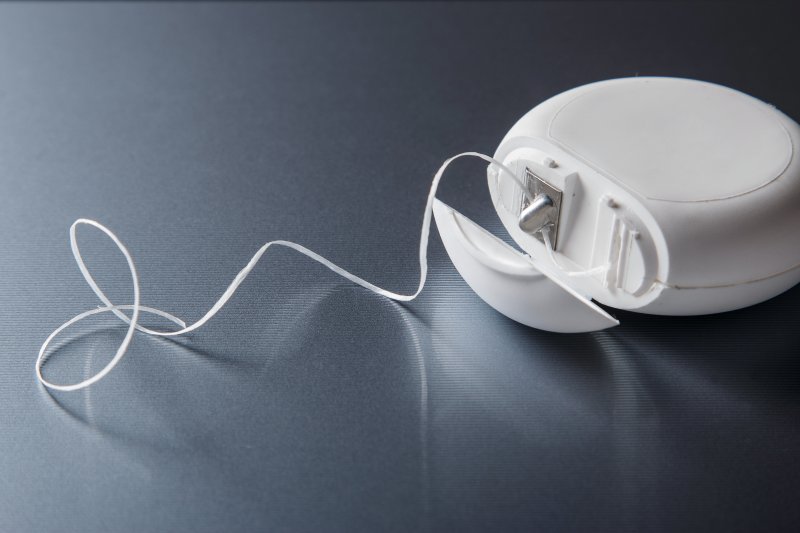
Flossing is often one of the most tedious components of an oral hygiene routine. However, it is essential when it comes to minimizing your risk for gum disease and tooth decay. If you struggle to make it a regular part of your routine, you might consider an alternative technique, such as a Waterpik. If you’re unsure whether it is as effective as traditional dental floss, read on to discover the differences and which one is best for your smile.
What is a Waterpik?
Unlike traditional dental floss that requires wrapping the material around your fingers and gently weaving it along each tooth, a Waterpik is a bit less time-consuming. Also referred to as a water flosser, these devices were invented in the 1960s. Using pressurized water that pulsates when turned on, it pushes food particles, bacteria, and plaque accumulations out from between your teeth and near your gums.
Many orthodontists recommend this type of flossing device simply because it is much easier to use when wearing braces. A Waterpik can reach those areas that are difficult to get to with traditional dental floss and is capable of getting into the tiniest crevices, especially those that may be too snug for regular floss to reach.
Waterpik or Dental Floss: Which is Best?
The benefits of the Waterpik should not discredit the tried-and-true advantages of standard dental floss, however. Most dentists continue to encourage this traditional method of flossing, urging patients to adopt the correct technique to avoid accidentally damaging soft oral tissues. Many often include it in regular dental checkups and cleaning appointments, too.
If you are unsure which type you should use but want to improve your flossing regularity, keep these facts in mind before choosing between the Waterpik and regular dental floss:
- A Waterpik is great if you have braces and need to maneuver around metal brackets and wires. It is also helpful for patients who have customized restorations, such as dental implants, a permanent bridge, or a crown.
- If you are an older adult who has arthritis, you may prefer to use a Waterpik, as it is easier to handle.
- Because Waterpiks can be a bit messy, if you prefer to avoid having to wipe down your countertop, you may want to stick with traditional dental floss.
- Regular floss is more effective at removing all plaque because it can more thoroughly clean each tooth.
No matter which solution you choose, trust that your commitment to flossing regularly is a positive step in the right direction. Over time, if you need to switch from one to the other, you can do that with the confidence of knowing you’ll get a proper cleaning each time.
About the Practice
At Long Family Dental, our team of dental experts has been caring for the residents of Cleburne and Midlothian for more than 40 years. A family-owned business, Dr. Robert Long and Dr. Chris Long are carrying on the work of their father, Dr. Henry Long, who originally established the practice. Joined by Dr. Wes Fichera, they are committed to helping patients improve their oral health at home. This means recommending products and solutions to ensure teeth and gums remain healthy year-round. Visit our website to find out how we can help you.
